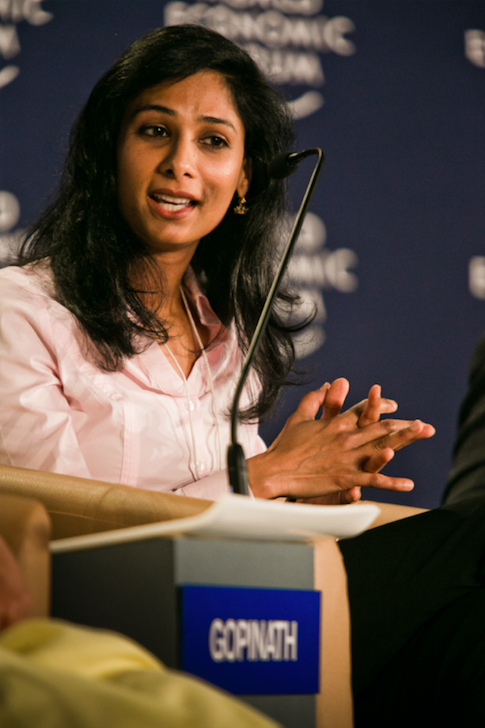India’s economic crisis in 1991 ignited the spark in a young Malayali girl from Mysuru to pursue the field of economics and eventually, foray into the world of international finance.
As time passed by, not only did she display an extraordinary streak of intellectual leadership, but after garnering extensive international experience, she also went on to emerge as one of the world’s outstanding economists.
Gita Gopinath’s appointment as the chief economist of the International Monetary Fund (IMF), which makes her the first woman and second Indian to assume the prestigious post, has taken her highly illustrious career graph a notch higher. The announcement was made by Christine Lagarde, the IMF’s managing director on Oct 1.
Here are five things to know about the economist, whose expertise and experience in the field is widely anticipated to bring greater reforms and changes at the global level:

1. The daughter of a farmer-entrepreneur father and homemaker mother, Gita originally hails from Kerala’s Kannur district. Her passion for economics took her to the national capital, where she studied at prestigious institutions like the Lady Shriram College and the Delhi School of Economics, before heading overseas.
2. After completing her PhD from the Princeton University in 2001, where she studied under prominent economist bigwigs like Kenneth Rogoff and Ben Bernanke, Gita turned to teaching the same year. She took up the post of an Assistant Professor at the University of Chicago’s Graduate School of Business before moving to Harvard University in 2005.
3. In the next two decades, Gita carved a niche in academia with her expertise in macroeconomics and trade and slowly made her presence felt as credible and stalwart economic advisor at an international level. Besides essaying editorial positions such as co-editor of the American Economic Review, co-editor of the current Handbook of International Economics and managing editor of the Review of Economic Studies, Gita has also co-authored a book and has written extensively on topics like global trade and investment, productivity, emerging markets, debt, and currency exchange rates.
You may also like: Meet Devaki Jain, A Gandhian Economist Who Has Spent a Lifetime Fighting for Women’s Rights
4. Gita worked closely with the Indian government when she served as a member of the Eminent Persons Advisory Group on G20 Matters for the Ministry of Finance as well as the economic advisor to Chief Minister of Kerala in 2015. The same year, she was selected as the John Zwaanstra Professor of International Studies and of Economics, a post that is conferred to outstanding scholars in the pedagogy. Interestingly, she was listed by the IMF as one of the top 25 economists under 45, only a year before.
5. Known for her vocal criticism of the economic status quo of India in recent years, her credentials also include holding illustrious posts such as the co-director of the International Finance and Macroeconomics program at the National Bureau of Economic Research. She has also been a visiting scholar at the Federal Reserve Bank of Boston and a member of the economic advisory panel of the Federal Reserve Bank of New York. In 2018 she was elected a fellow of the American Academy of Arts and Sciences.
Taking over from Maurice Obstfeld, Gita Gopinath will now be the second economist from India to assume the post at the Washington DC-based organisation, after notable economist and former RBI governor, Raghuram Rajan.
(Edited by Gayatri Mishra)
Like this story? Or have something to share?
Write to us: contact@thebetterindia.com
Connect with us on Facebook and Twitter.
If you found our stories insightful, informative, or even just enjoyable, we invite you to consider making a voluntary payment to support the work we do at The Better India. Your contribution helps us continue producing quality content that educates, inspires, and drives positive change.
Choose one of the payment options below for your contribution-
By paying for the stories you value, you directly contribute to sustaining our efforts focused on making a difference in the world. Together, let's ensure that impactful stories continue to be told and shared, enriching lives and communities alike.
Thank you for your support. Here are some frequently asked questions you might find helpful to know why you are contributing?

